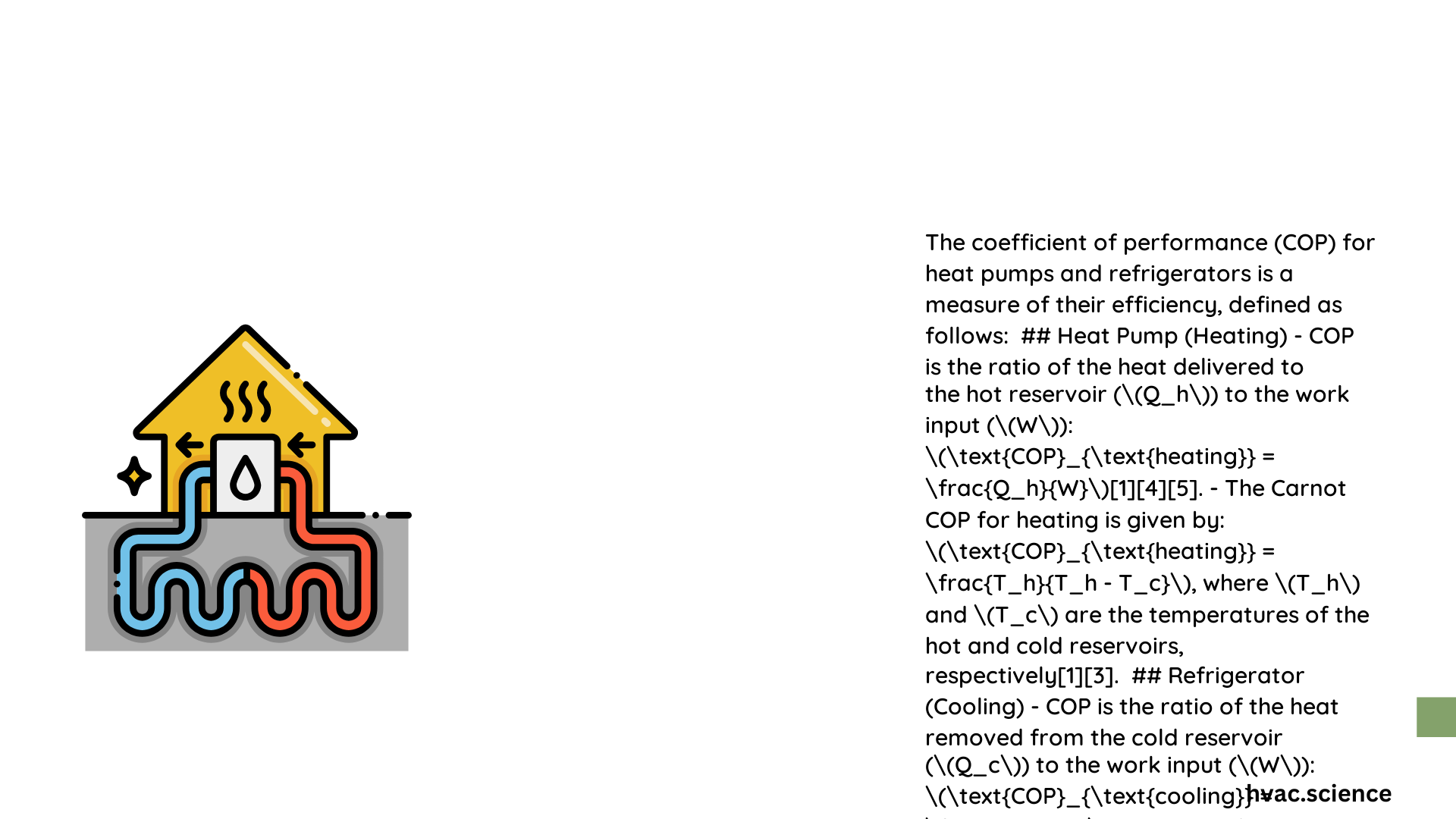The coefficient of performance (COP) represents a critical metric in thermal engineering that quantifies the efficiency of heat pumps and refrigeration systems. By measuring the ratio of useful heat transfer to work input, COP provides engineers and consumers a standardized method to evaluate energy performance across different thermal technologies, enabling more informed decision-making in sustainable energy applications.
What Makes Coefficient of Performance Critical?
How Do We Define Coefficient of Performance?
The coefficient of performance (COP) is a dimensionless numerical representation of thermal system efficiency, calculated by dividing the useful heat transferred by the work required to accomplish that transfer. For heat pumps and refrigerators, this metric reveals how effectively energy is converted into heating or cooling.
Mathematical Representation
| System Type | COP Formula | Description |
|---|---|---|
| Heating | COP = Qh / W | Heat delivered to hot reservoir divided by work input |
| Cooling | COP = Qc / W | Heat removed from cold reservoir divided by work input |
What Factors Influence COP Performance?
Key performance determinants include:
- Temperature Differential
- Smaller temperature gaps increase efficiency
-
Wider temperature ranges reduce COP
-
System Design
- Working fluid selection
- Compressor technology
-
Heat exchanger efficiency
-
Environmental Conditions
- Ambient temperature
- Humidity levels
- Altitude
How Do Heat Pumps Compare to Refrigerators?
Heat Pump COP Characteristics
- Typical COP range: 1.5 – 4.0
- Ground-source systems: Higher efficiency
- Air-source systems: Lower but still effective
Refrigerator COP Characteristics
- Typical COP range: 3.5 – 5.0
- Compression cycle dominates performance
- More consistent efficiency across conditions
What Are Practical Efficiency Implications?
Performance metrics translate directly into:
– Energy consumption reduction
– Operational cost savings
– Lower environmental impact
– Enhanced sustainable technology adoption
Can We Improve COP?
Potential improvement strategies include:
– Advanced refrigerant technologies
– Enhanced heat exchanger designs
– Intelligent control systems
– Precision thermal management
Technical Calculation Example

Sample Calculation:
– Work Input: 1 kW
– Heat Transferred: 3.5 kW
– COP = 3.5 kW ÷ 1 kW = 3.5
Advanced Considerations
Seasonal Performance Factors
- SCOP (Seasonal Coefficient of Performance)
- Accounts for variable operating conditions
- More realistic long-term efficiency metric
Emerging Technologies
- CO2 refrigerants
- Magnetic refrigeration
- Thermoelectric systems
Limitations and Challenges
- Complex real-world performance variations
- Non-linear efficiency relationships
- Manufacturing cost constraints
Conclusion
Coefficient of performance remains a fundamental metric for understanding thermal system efficiency, providing critical insights into heat pump and refrigeration technologies.
